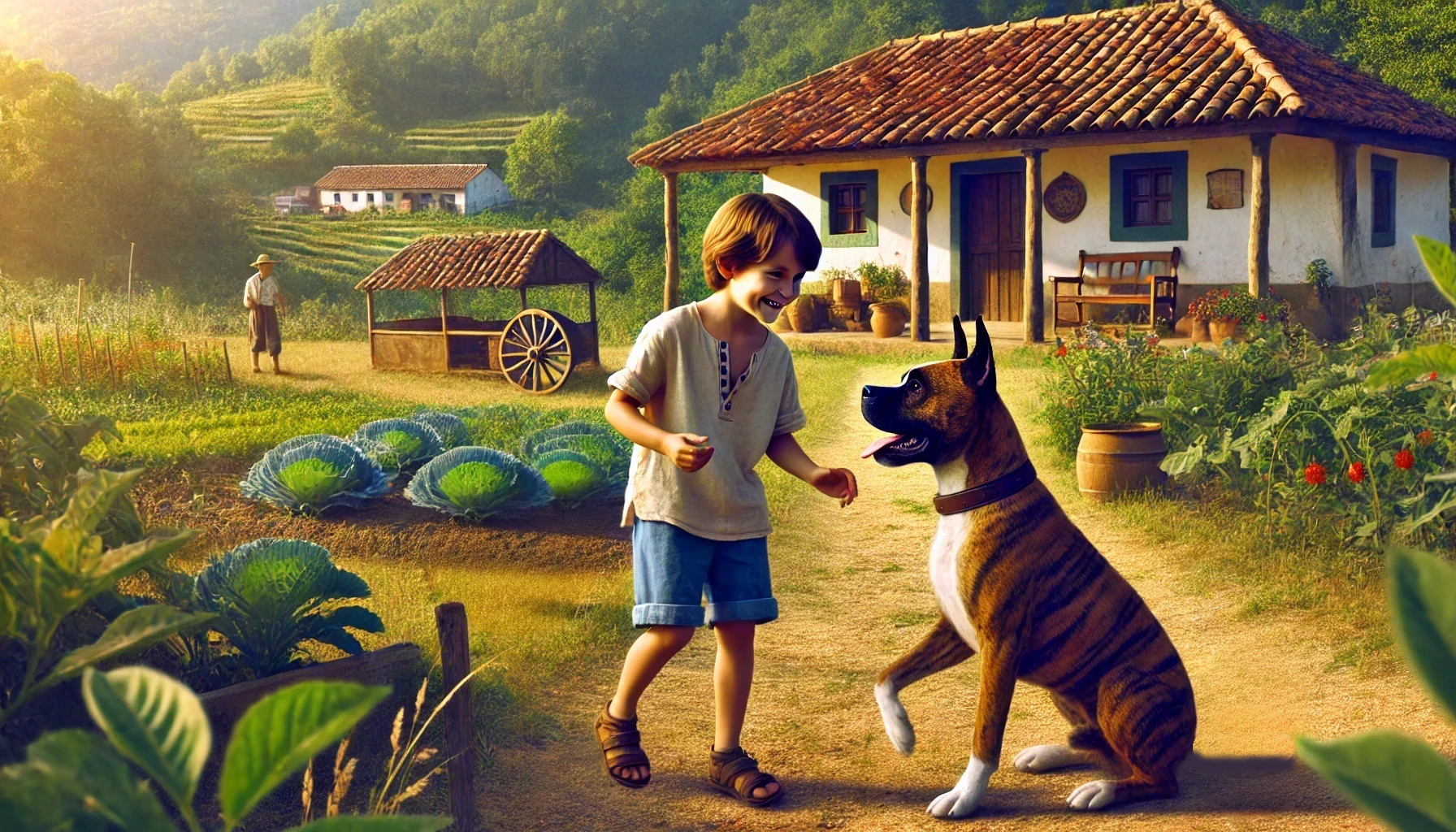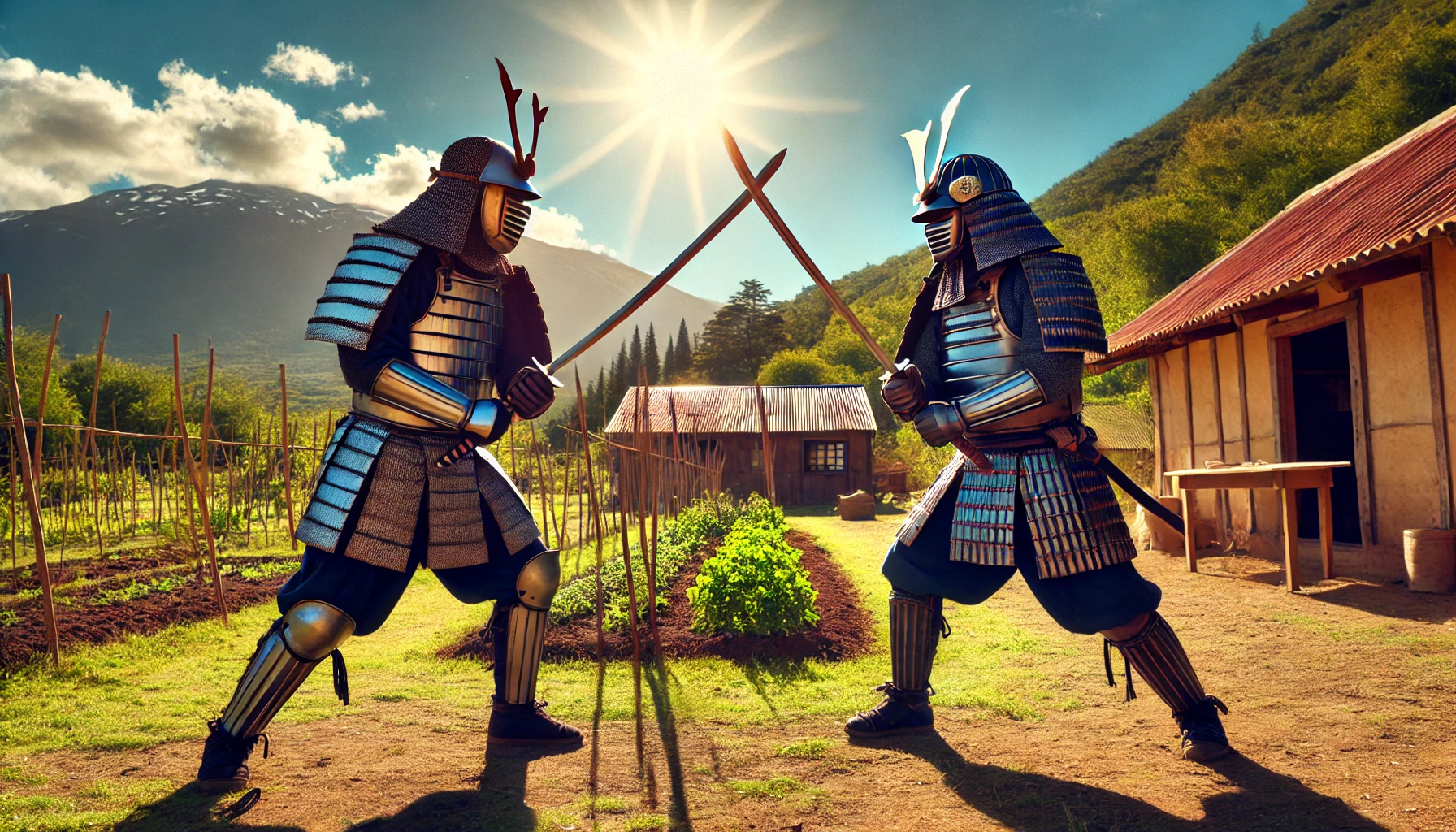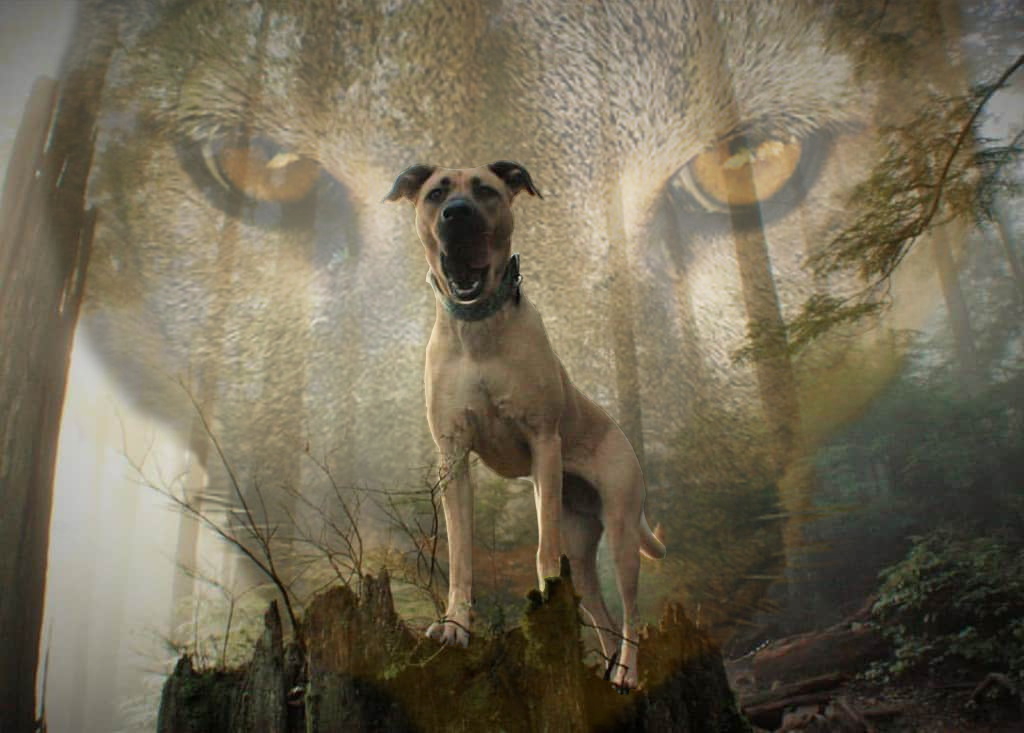Tigre
The Brave Dog’s Story of Loyalty and Hardship
When I was little, the pets we had at home were always cats. This was primarily because my elder sister was always finding kittens. Coupled with the fact that my dad didn’t want pets in the house, it often ended up with us keeping a cat or two. But no other animals managed to get past my dad’s scrutiny. All the cats we had belonged to my sister, but I was the one who taught them to fight like true felines.
From a young age, I was quite observant and noticed how aggressive cats could be. Before I began training our own, the cats we had were often bullied by the alpha tomcat from the neighbourhood. What can I say, I could relate. The beatings and shoves I endured from the school bully, or what they now call bullying, felt all too familiar. So, I decided that no cat of ours would ever go through that.
Training began when the kitten was around seven months old. I’d play with them and out of the blue, give them a tap on the ear. For those unfamiliar with cats, this is a sensitive spot they target during fights. That’s why the more aggressive toms often have torn ears. At first, they’d be puzzled by my actions. However, after a few weeks, they’d become wary of me, keeping a watchful eye. If they saw my hand approaching their head in a peculiar manner, they’d hiss, scratch, or flee. This marked the beginning of phase two: repeating the same actions but increasingly quicker over several months. By the end of phase two, I’d have a near-adult cat that was attuned to my hand’s every move, reacted swiftly, and didn’t hesitate to defend itself, often leaving me with scratched-up hands. This led to phase three.
In this final phase, my goal was to grasp the cat by the lower part of its neck. While I solely used my right hand in the first two phases, by now, they were so fast and familiar with my tactics that I’d use my left hand to distract them while attempting the grab with my right. Such a move, for a feline, is one of the most threatening – akin to how they hunt, either snapping their prey’s spine or suffocating them by the neck. While I never harmed them, they’d retaliate fiercely, usually leaving me with deep, bloody scratches. Phase three concluded when they’d defend so swiftly that I couldn’t grab their neck, marking the end of their self-defence training.
From that point on, the system worked wonders. My sister’s cats were no longer prey to the neighbourhood’s alpha tomcat, which would often kill younger males. Not only that, in no time, our cats became the new alphas. We even had one named «Tiny» – named for his small size when he first arrived – grow into a massive cat that would bravely confront German Shepherd-sized guard dogs, typically emerging victorious. Well, except when facing my rooster, which I had raised from a chick, but that’s another tale altogether.
All of this happened when I was just over ten years old, back in the 1970s, in a distant country called Chile. The year 1973 brought a peculiar incident to our family. A friend of my dad’s, who bred dogs, asked if he’d like a young dog – not a puppy anymore. Apparently, a purebred Boxer had eloped during her heat and mated with a German Shepherd. From this union, a litter was born, but they hadn’t found a home for the last pup and were merely looking for a loving place. Surprisingly, my dad agreed and asked me if I wanted to be the dog’s owner. My reply was an emphatic yes, accompanied by a beaming smile. A few days later, my dog arrived – a Boxer with the ears and snout of a German Shepherd and, to me, of enormous size. When he greeted me, he nearly knocked me off my feet. When asked for a name, I chose «Tiger.»
Tiger was the only dog I’ve ever had, and I suspect the bond we forged is common amongst dog owners. But for me, Tiger became my sibling, my best mate. Whenever the weather, or our parents, permitted, we’d play and run around Villa Berlin. Him, me, and my childhood pals. After school, one of my favourite games was to try to knock him down before he did the same to me. The game would end when one of us couldn’t get back up. When he won, he’d pin me down, pressing his front paws against my shoulders so I couldn’t move.
But this was Chile, and the year was 1973. So, September came, and with it the 11th, a day when darkness reared its head, and the Chilean military defended foreign interests, spilling their own people’s blood. My mother and father were left-wing trade unionists, so a few weeks later, they were arrested by the navy and imprisoned due to the neighbour across the road informing that they were home. My mother was mistreated and tortured for three months and my father for nine. But I only found out about this later. I only remember waking up to strange noises in the house and seeing an M60 heavy machine gun leaning against the wall of my room. I got up to find my home filled with soldiers tearing everything apart, supposedly searching for weapons. One of them, dressed in a blue coat and without a helmet, saw me and started to follow me wherever I went. I looked for my mother and father but couldn’t find them. Shortly after, everyone left the house. That’s when I found my seven-year-old sister crying in a corner. The two of us went out to the street just in time to see my father being loaded onto a Chilean navy truck, lying on top of others already in the truck. I didn’t see my mother. At that moment, the neighbour from next door took us in. I couldn’t find Tigre anywhere. Apparently, he had been smarter than his human family and had escaped when the soldiers were entering the neighbourhood. I was in our neighbour Rosa’s backyard, hoping Tigre would return when I heard the agonising scream of my older sister who had just come home to find everything in chaos. Rosa quickly went out to inform her that her siblings were with her and that our parents had been taken. My elder sister was twelve, and that day, she had no choice but to grow up.
That evening, two of my mother’s sisters collected us, and we began a journey of several weeks moving from one relative’s house to another. Someone took care of Tigre during this time, who returned home a few days later. But between the shock and fear, I don’t remember who it was.
Eventually, we went to live with my grandmother Marta, my father’s mother, in a village called Codegua near the city of Rancagua, south of Santiago. This was rural Chile, and we arrived at the house where Pedro, one of my grandmother’s brothers, lived. The house had land with several gardens and some pigs. My grandmother chose to live there over her city home because we had access to food, and it was cheaper to maintain. This was crucial now that she had three children to feed.
That was for a few weeks until she had three children and a large dog to feed. Yes, after several weeks, I was finally reunited with Tigre. It was the first happy moment in many weeks.
Spring was coming to an end, and the days grew longer and hotter. I spent a lot of my free time playing with Tigre, just like we used to. The rest of the time, my grandmother made sure my sisters and I had chores. My duties were to ensure the kitchen was ready when she began preparing breakfast and during the day, help her brother Pedro in the garden and with the pigs. But besides that, and considering that the summer holidays started at the end of December, I had plenty of free time to play with Tigre.
One hot afternoon, I was lying among the tomato plants when Tigre walked past without noticing me. I spoke to him, and he jumped in surprise. I never imagined I could startle a dog, so I spent days hiding, waiting to scare him again. We had a lot of fun as he decided every time I scared him, he would pin me to the ground. As he became more attentive, it became harder to catch him off guard. If he saw me lurking somewhere, he’d charge at me, pinning me to the ground, so I had to change tactics. I began to climb the fruit trees in the yard and would wait for him. I’d drop silently right in front of him and, using the element of surprise, would jump at him, trying to tackle him. He, of course, resisted, and we’d roll on the ground, laughing and barking. Days went by, and he wasn’t scared anymore, so the moment I landed in front of him, he’d simply leap onto me, claiming victory. March came, and summer and the holidays were ending. My grandmother, who had been a teacher all her life, enrolled us all in the village school.
I used to play with Tigre whenever I could, and thus, autumn crept up on us. One day, the tactics took a step up. I was hidden, waiting for him, but he saw me and came straight at me. Before he could get to my hiding spot, I came out and positioned myself slightly crouched in front of him, arms outstretched, waiting and staring deep into his eyes. Tigre, as you’ve probably realised by now, was very clever. Sensing the change in dynamics, he stopped dead in his tracks just over a metre from me, looking back intently. We remained like this for a while until a noise distracted him. In that brief moment of inattention, I lunged at him, grabbing him by the neck and wrestling him to the ground, growling like a dog. This became the first of several victories because Tigre lacked patience. After a few minutes of our mutual staring contest, he would either get restless or become distracted, allowing me to spring on him with cat-like speed, pinning him down while growling. But one day, he kept his focus.
There we were, under the mid-afternoon sun with the chirping of a sparrow as our only background noise, like two samurais from medieval Japan, motionless, locked in a gaze, knowing the first to look away would lose.
There we were, under the mid-afternoon sun with the chirping of a sparrow as our only background noise, like two samurais from medieval Japan, motionless, locked in a gaze, knowing the first to look away would lose. After almost ten minutes, I heard my grandmother call out. The next thing I remember was lying on my back, Tigre on top of me, his paws on my shoulders, showing his teeth and growling mere centimetres from my nose. I tried to move, but his growl intensified. He opened his mouth slightly wider, revealing all his teeth, coming closer until he was almost touching my face. I must admit, I was a bit worried. «Alright, alright,» I conceded, «You’ve won.» As if by magic, his demeanour changed; he released me, wagged his tail, and barked happily. I hugged him tightly and went to my grandmother.
When I reached my grandmother, her face bore that expression adults wear when they have to deliver bad news to a child. A mix of sadness, seriousness, and uncertainty. I feared the worst about my parents, but she reassured me that there was no news and that they were alright. By that time, I had realised that «alright» meant they were still alive. She told me we couldn’t keep Tigre. He ate a lot, and food was scarce. I was already aware of the issue since some days when I fetched Tigre’s food, my grandmother only had leftover scraps from meals, leaving Tigre hungry. Whenever I could, I would sneak him some of my portions, but my grandmother would scold me if she caught me. A teacher’s pension wasn’t enough to feed two adults, three children, and a large dog. Just then, I felt something brush my leg and realised Tigre was beside me, watching. Tearfully, I stroked him behind an ear, thinking how this unfairness was nothing compared to the hardships my parents or my young teacher had faced. That teacher, whom I’d had in my village school, was once taken away by the police during a maths lesson. She was terrified and crying. I never found out if she survived that ordeal. Looking at Tigre, I realised I couldn’t act like a child; I had to support my grandmother. I agreed to let Tigre go but insisted we couldn’t abandon him. She told me not to worry. She had a nephew with a farm and plenty of land at the base of the mountains, and many dogs to guard the property and livestock. Given Tigre’s intelligence, she believed he’d adapt quickly. I wasn’t convinced a city dog could learn the ways of a country dog.
A few days later, my grandmother’s nephew arrived in an old Land Rover. His name was Carlos, and he was friendly. More importantly, Tigre took a liking to him. I bombarded him with questions: Where would Tigre live? What were these tasks my grandmother mentioned? How many dogs did he have? Instead of answering, Carlos asked my grandmother if I could accompany him to drop Tigre off. He’d be returning to the village by evening and could bring me back. I thought my grandmother would refuse since we barely went outside for fear of the police, the military, or a nosy neighbour finding out about us. To my surprise, she agreed.
I can’t recall how long the journey took, but the hills marking the start of the Andes mountain range loomed large. The place was spacious with plenty of trees and two large buildings – a house and a barn filled with tools, pig feed, and where many dogs slept. At a glance, I counted at least fifteen, but they were all small breeds. Tigre, with his golden fur and taller stature, stood out. He was surrounded by the smaller dogs, who sniffed and wagged their tails at him. Tigre stood still, wagging his tail slowly in response. Carlos had two boys and a girl. The youngest seemed around seven and the eldest around twelve. Their interaction with Tigre and his evident joy being with them reassured me. As it was time to leave, I hugged Tigre, managing to tackle him once more to the delight of the children.
Weeks later, something unforgettable happened. There was a knock at our door – it was my mother. She had been released after months imprisoned on a merchant ship named Lebu in Valparaíso. She looked weary and sad, except when looking at us. My younger sister clung to her, and my older sister and I kept touching her, needing to confirm she was really there.
It took the winter and part of the spring before Carlos unexpectedly came to the house. I was in the garden, engrossed in one of the many adventures conjured in my mind, when my mother called me. Carlos wanted to speak to me. He told me plainly: Tigre had died. I stood frozen, looking at him. «But he was supposed to be taken care of,» I said as tears streamed down my cheeks once more. I was about to run off to climb the avocado tree, my usual sanctuary, when Carlos told me I needed to know just how special Tigre had been. I already knew this, but my curiosity got the better of me, so I stayed. This is what Carlos relayed.
Tigre fitted perfectly into their family and with the other dogs. The children were overjoyed to play with him as they had never met a dog that knew how to play hide and seek. But he also won the heart and respect of the adults due to two significant events. The first was that roughly a month after Tigre had joined them, they were awoken in the middle of the night, around 2 am, to cries of «Help!», «Save me!». Carlos and his wife checked their children’s rooms, but they were all sound asleep. Just then, a farm worker who slept in a room attached to the house came in to inform them someone was in the barn. Grabbing his shotgun, Carlos and the two others went to the woodshed, where muffled pleas of «Please help» could still be heard.
They opened the door to find Tigre atop a man lying on his back on the floor. Tigre had him pinned down, his front paws on the man’s shoulders, teeth bared and growling fiercely. If the man attempted to move, Tigre would inch closer to his face until he no longer dared to shout but merely whimpered for assistance.
A sack of animal feed was nearby, and Carlos quickly deduced this must be the thief who had been pilfering from the barn for some time. He couldn’t understand why the other dogs never stopped or even barked at him. As they approached, they recognised him as a cousin of Carlos’s wife who occasionally helped on the farm. Uncertain how to safely remove Tigre, Carlos simply told him to get off. Immediately, Tigre obeyed and stood by Carlos’s side, never taking his eyes off the man who then accused them of keeping a rabid dog on the farm. Carlos wasn’t fooled. He now understood why the other dogs didn’t react when thefts occurred. This thief was a familiar face who regularly entered and exited the barn. Yet somehow, Tigre had realised and had apprehended him without causing harm. The next day, Tigre was rewarded with double his usual portion of food, receiving hugs and strokes from the entire family.
The second incident occurred deep into winter when the hills and mountains were blanketed with snow. One reason they kept so many dogs was to protect the pigs. During Carlos’s grandfather’s time, when heavy snows occurred, pumas would sometimes descend from the mountains and kill a pig or two. But pumas had learned to fear humans and hardly ever ventured down, or there were very few left. However, there was now a more severe problem with feral dogs. These wild dogs, as they were called, would also come down from the hills during heavy snows, attacking and killing much of the livestock. They even killed guard dogs or mastiffs since these packs consisted of twenty or more members.
On a clear night with a full moon, but with a cold that seemed to pierce your very bones, Carlos was awoken by the piercing shrieks of a pig. Death cries accompanied by the odd growl and in the background, the barking of his dogs in the barn. Carlos instantly knew what was happening. He sprung up, quickly threw on a coat and boots, and dashed outside. The pig’s cries had almost ceased, but he could hear the distant barks of a pack. He raced to the barn and flung open the doors; the dogs sped out in the direction of the whimpering pig. But a few metres further, upon hearing the pack’s barks, they came to a sudden halt. They knew what they were up against and decided it was best not to engage. All except Tigre who, at full speed, leapt over the fence where the now-silent pig was. Carlos stood frozen. A city dog against a wild pack?
«Maria, pass me the shotgun!» He yelled as he raced back to the house. «Tigre has taken on the wild dogs on his own!»
Upon reaching the house, his wife handed him the loaded shotgun. «There are two cartridges loaded, and here are more,» she said urgently. «Please hurry!»
Carlos ran as fast as he could. He had heard dog barks and yelps in a nearby field and feared the worst. Seeing him run, the rest of the dogs followed but none overtook him. He opened the gate to see a dead pig and a bit further, the body of a large dog. Its throat was torn out. He realised this wasn’t the end, so he sprinted to the next field where he’d heard more barking, only to see Tigre hopping over the next gate with two more dog bodies on the ground. Carlos ran non-stop to reach the gate Tigre had jumped over, and under the light of the full moon, he witnessed something he’d never forget.
Midway between the gate where Carlos stood and Tigre, lay the body of a fourth dog. Dead. Tigre stood in front of two dogs his size, who growled and bared their teeth with their hackles raised. Yet Tigre neither growled nor barked nor moved. He just stared intently at the two dogs. Suddenly, one of the dogs spotted Carlos, and that was its last move. Tigre moved faster than Carlos had ever thought possible, tearing into its throat. Without waiting for the dog to fall, Tigre turned and stared down the second dog in complete silence. He didn’t act like a dog but seemed possessed by the spirit of a puma. Carlos felt a twinge of fear witnessing such an unnatural scene. Tigre, living up to his name, looked more feline than canine. To soothe his nerves, Carlos called out to Tigre. Hearing him, Tigre hesitated for a moment, giving the second dog a chance to turn and flee, whimpering in fear. Tigre chased after.
Carlos reached the next field but saw nothing. Only the distant sounds of the pack, yelping in fear.
The next morning, another dead dog and a severely injured pig, which they had to put down, were found. Tigre didn’t return until midday, covered in mud and dried blood. They bathed him in warm water and fed him a hearty pork and potato stew. That winter, no wild dog attacks occurred in the valley, and tales of Tigre, the dog that fought like a puma, spread from home to home.
One spring day, the kids wanted to go for a walk. The adults, all busy, said they could only if they took Tigre with them. Delighted, the children set off. Along the way, they encountered their mother’s cousin, who had promised never to steal again. But fate intervened; they met him next to an irrigation canal, swollen from the melting snow of nearby hills. The man managed to kick Tigre, who fell into the water and was swept away by the current. They never found his body.
When Carlos left, I climbed the giant avocado tree and cried for a long while. Not just for my friend who died a hero, but for a world gone mad, where the good were mercilessly slain by those meant to care for us. I vowed that someday, many would know the story of Tigre, the dog that fought like a puma.
I thank Loreto Alonso-Alegre and especially Dolores Póliz for the proofreading.
In this section, you can add comments about this story or contribute to the writing piggy bank.
The writer’s piggy bank.
If you’ve enjoyed the story, you can help by donating what you think the story is worth.
Just click the «Donate» button and enter the amount you consider appropriate.
Thank you!
Alejandro.
«Donate» uses the PayPal secure platform.

Comments
Your opinions are very important to me and they help me keep writing.







0 comentarios